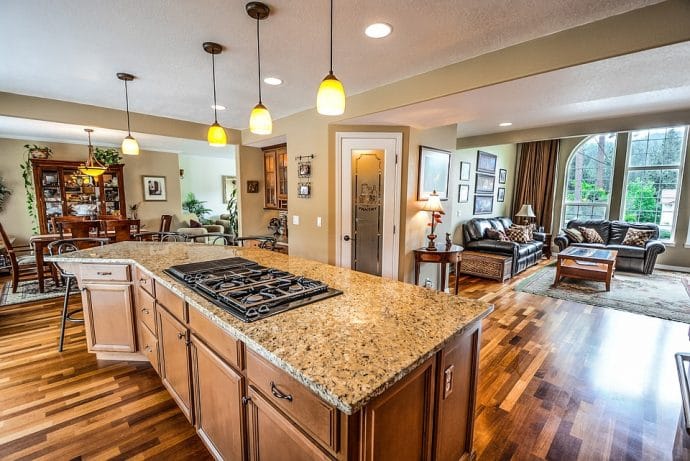A kitchen without its cabinetry is essentially nonfunctional. Absent necessary storage space and a workable way to organize your kitchen wares, kitchen clutter soons takes over and every kitchen-based task becomes tedious and stressful.
And the aesthetics of the most frequented room of the house also depend, in great measure, upon the style of the kitchen cabinets.
Cabinets are easily among the most important elements of a well designed kitchen – but many, for that very reason, find it difficult to make a decision when shopping for new kitchen cabinetry.
Here are 5 key factors to consider when cabinet shopping that will simplify the process and help clarify which cabinets are the best fit for your kitchen:
1. Affordability & Ease of Installation
To save both time and money on your new kitchen renovation project, take the time to research the best online cabinets, which are generally RTA (ready to assemble) kitchen cabinets that can be shipped to your doorstep and put together with only the simplest hand tools.
Samples are available so you can make sure you’re satisfied with the look, feel, and quality level of your “e-cabinets” before you commit the full purchase price.
And if you peruse the online product pages and photo galleries at cabinet sites, you’ll soon realize that there’s everything from economy, basic to high-end semi-customized available.
If you need to save money, install your cabinets relatively quickly, and still get good quality – try shopping online instead of at the home improvement store for your new cabinetry!
2. Strength & Durability
Particle board may get you a cheaper price tag, but if you’re looking for strong, durable cabinets that can stand the test of time and continual use, plywood is your better option. And plywood cabinets will also add value to your home and be a positive selling point should ever relocate.
But if you’re looking to combine strength with an extra dose of style and beauty, consider the now very popular cherry wood – great with a deep, rich-textured finish. And on the more “exotic” side, you can get both looks and longevity out of such “alternatives” as mahogany and bamboo.
3. Size & Layout
Especially if you’re going to order your cabinets online, you have to take careful measurements and think long and hard about the exact layout you want. Make some sketches of several possibilities and compare them.
Get feedback and expert advice – but in the end, “go with your gut.” After all, you and your family are the ones who will live with and use these cabinets for years to come.
If you have a small kitchen, consider tall kitchen cabinets (now the fastest growing style) to save space by “going vertical,” and to make your small space look larger.
4. Full Functionality
Your first consideration as to function is sheer size – volume of storage space. But remember that how you utilize and organize that space will determine how much storage space you “really” have.
Frameless, Euro-style cabinets, for example, offer better space utilization than do rail-style American cabinets. Wall cabinets that stretch all the way to the ceiling (sometimes from the floor, sometimes from mid-wall) let you use high-up space to store infrequently used items.
And using drawers instead of doors at lower levels is a smart move, as is installing turntables and hardware storage accessories for pots, pans, silverware, cups, bowls, cooking utensils, and more.
5. Style & Integration
Finally, you want to take advantage of the great potential of your cabinets to contribute to the overall ambiance, through complementary or contrastive color, creation of vertical/horizontal lines, and via decorative knobs, hinges, and handles.
Base cabinets are usually more functional-focused, while wall-hung cabinets are often used to create a stylish backsplash or another “aesthetic statement.”
Style, function, size and layout, durability, and affordability are all key considerations in choosing you new cabinets. Take an organized approach to the cabinet-shopping process, and don’t overlook these 5 critical factors.

